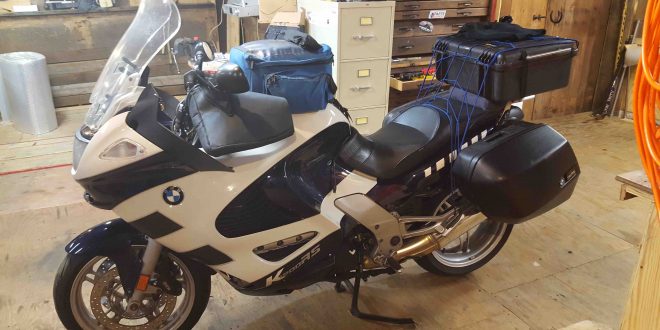NORTH GRANBY, CT – The benefits of weeks of conditioning – both of myself and my motorcycles – will soon be known. The Crotona Midnight Run is a week away, provided the weather cooperates, and my excitement level is thru the roof.
 For the uniformed, the Crotona Midnight Run is a slow-speed, overnight road rally in the dead of winter and in the dead of night that begins and ends in Congers, NY. This year marks its 100th year anniversary and my fantasy as a first-timer is to be the winner.
For the uniformed, the Crotona Midnight Run is a slow-speed, overnight road rally in the dead of winter and in the dead of night that begins and ends in Congers, NY. This year marks its 100th year anniversary and my fantasy as a first-timer is to be the winner.
The recipe to win involves so much more than just riding your motorcycle through a charted course, so homework and practice have been necessary.
Late last year, I called Piet Boonstra, a man who has 11 victories in the Crotona Midnight Run, and asked if he would share his knowledge to help me prepare. Staying awake through the night and riding in extreme cold are the obvious challenges, but not the only ones.

Piet shared that the event works exactly like the old enduros. You get a route sheet with all the turns and you stay on a 24 mph (or whatever is specified) average throughout. You’re supposed to come into the checkpoints on-time – neither early nor late. You get penalized a point for every minute you come in early and two points for every minute you come in late. You’re charged five points for every minute early after the fifth minute. You can also just ride it by following the route sheet and ignore the time. That way you would have the satisfaction on finishing within your hour of the specified time.
Either way, the trick to “finish” is not to get “lost” and stay within your hour without being disqualified. You would be disqualified if you come into a checkpoint more than an hour late or more than 15 minutes early. Of course, you could still ride the whole thing, but you would be out of the scoring if you were disqualified for any reason.
OK, so now I knew the rules. What did I need to do to prepare?
I keep my machines in good working order at all times so there were no major repairs needed. My BMW K 1200 RS has fresh rubber on the rims due to a front tire mishap last fall. I have heated gear. I’ll also have a head sock, which from experience I know is good to below zero temperatures. Just in case, I’ll carry bibs and snow pants, along with rain gear in my panniers.
The BMW has heated hand grips and I’ve created and installed my own version of Hippo Hands with this ride in mind. I sewed them myself. (Mostly anyway. Thank you, Emily, for what I couldn’t sew.) Warmth and staying dry should all be covered. I have a large tank bag to display my route sheet well and a headlamp for my helmet (plus a backup mag light in my pocket) to help me see it. Finally, there will be a digital stop watch on my dash that hopefully the cold will not disable. That takes care of my mechanical prep.
With all my riding gear on I weigh in at 225 pounds. My bike weighs 628 pounds (wet). The top case and all the gear I carry – tools, first aid kit, etc. – surely add 50 pounds bringing me to approximately 900 pounds.
To prepare, I’ve been riding my bike at night to get in tune with its weight and to practice staying alert and navigating in the dark and cold. I should also mention that I must ride over 130 miles in each direction to just to take part. That is more distance each way then the Crotona Midnight Run is in its entirety. Yes, I needed some conditioning.
Speaking with other riders, I have heard that I over-think these types of rides. I disagree. It’s important to know your own abilities for a ride like this. Fatigue, combined with extreme cold and a freezing road, is something I think I should condition for. Not for my fantasy of winning, rather to complete it safely.
I’ve had roughly five weeks to get ready for the ride. I can’t wait to take part but the conditioning has been problematic. I’ll have more details in another column next week, and a follow-up after the Crotona Midnight Run.
 Ride CT & Ride New England Serving New England, NYC and The Hudson Valley!
Ride CT & Ride New England Serving New England, NYC and The Hudson Valley!



